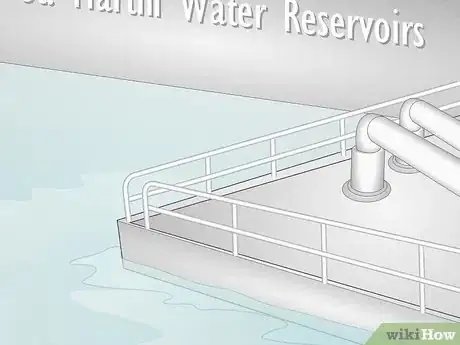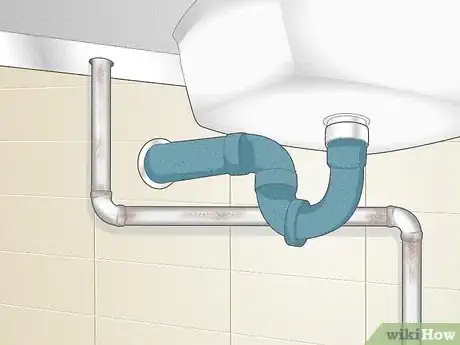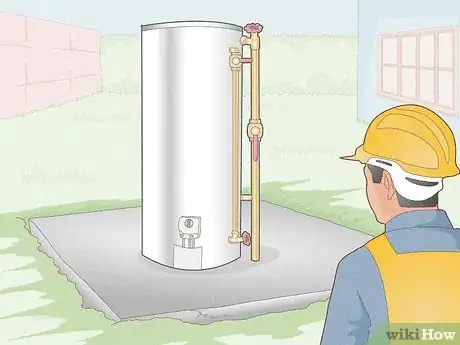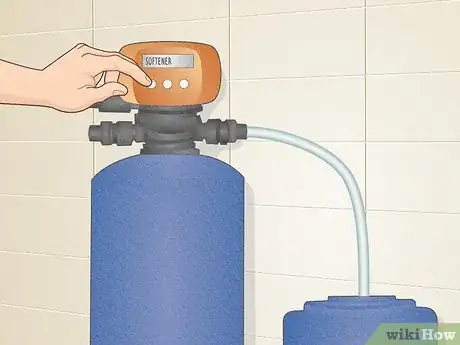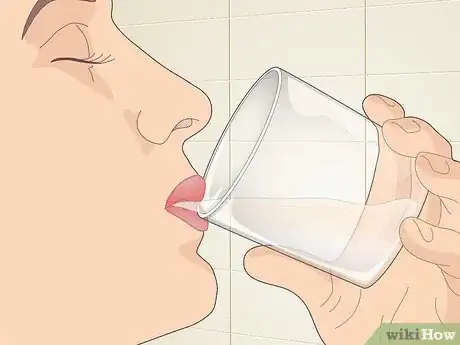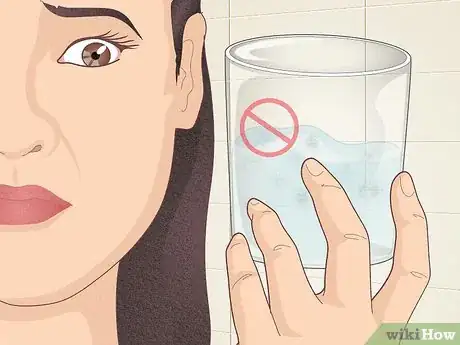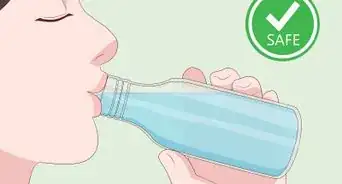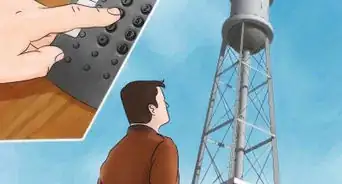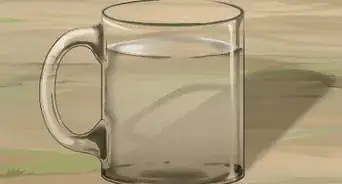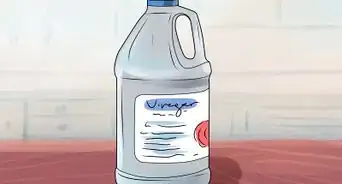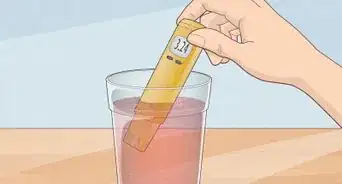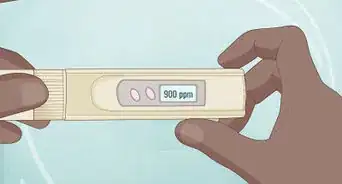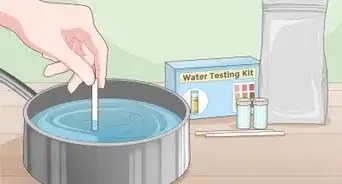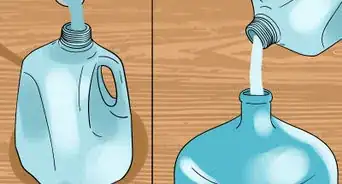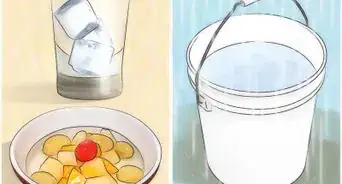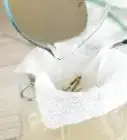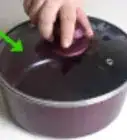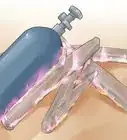This article was co-authored by Andrii Gurskyi. Andrii Gurskyi is the owner and founder of Rainbow Cleaning Service, a New York City cleaning company specializing in apartments, homes, and moving cleanup using non-toxic and artificial fragrance free cleaning solutions. Founded in 2010, Andrii and Rainbow Cleaning Service has served over 35,000 customers.
There are 8 references cited in this article, which can be found at the bottom of the page.
This article has been viewed 35,288 times.
Yuck! Does your water have a metallic taste or a reddish-brown tint to it? It could be because there’s a lot of iron in it, which can rust and affect the taste and change the color of your water. But don’t worry. Usually, a good filtration system can take care of the problem. But, it can be helpful to know the cause and how high the iron content of your water is.
Steps
Why is my water brown all of a sudden?
-
1The most likely cause is rust in your water. If your water starts to taste metallic and change to a dark orange or brown color, it’s probably because there’s a lot of iron in it. When iron corrodes, it develops the distinctive reddish-orange color of rust. If the rusty iron is in your water supply, it can change the color of the water that comes out of your faucets and showers to a yucky brown.[1]
-
2It could also be sediment that was stirred up. It’s pretty common for dirt and other natural sediments to settle at the bottom of water supply lines. Usually, you’d never even notice it. But if something stirs up the sediment, such as a higher service demand or if firefighters draw from the supply lines to power their hoses, it can cause the water that comes out of your tap to appear yellow or brown.[2]
- Usually when this happens, the sediment will eventually be flushed out of the lines.
Advertisement -
3A new water source can change the look of your water as well. Sometimes if the source that your water supply lines draw water from is changed, it can affect the quality and disrupt the way it flows, both of which can change the color. If your city decides to change water sources, the new source may contain more sediment or rust that can change the color of the water that comes out of your faucet.[3]
Why do I have rust in my water?
-
1It’s most likely because of rusty pipes. The metal pipes that your water supply flows through can eventually start to corrode and develop rust. If the rust gets into your water, it can give it a metallic taste and change the color to a yellow or orangish-brown color.[4]
-
2It could be because of iron in the water if you use a well. It’s not unusual for natural wells to have some iron in them. Over time, the iron can naturally corrode and develop rust. The deposits can affect the taste and cause staining. If the iron content gets too high it can turn your water a dark-yellow or reddish-brown color.[5]
How do you stop your water from having rust?
-
1Get your water tested by a lab to see if it contains rust. Look up an independent water testing lab and take a sample of your drinking water. Send them the sample and wait for the test results. The results can tell you how serious the problem is and help you choose what you need to do to fix it.[6]
- Use a water testing lab that isn’t affiliated with your local municipal water system so there isn’t any conflict of interest.
-
2Install a water filter to remove iron and other contaminants. Contact a professional filtration installation company and have them come out to your home to inspect your water supply. Different filters have different pore sizes designed to remove specific contaminants.[7] Choose a filter that removes iron particles and have it installed onto your main supply line by a professional. That way, it’ll remove rust before it comes out of your faucets and makes it into your drinking glass.[8]
-
3Get a water softener system if your well water has rust in it. Water from a well is sometimes known as “hard water” meaning it still has a lot of naturally occurring minerals present in the water. The minerals can affect the smell, taste, and color of the water. If your hard water has a lot of iron in it, your water can have rust in it. Water softeners use salt to filter your well water and remove minerals such as iron from it. Contact a professional water softener installer to come out to your home and fit your well with a system.[9]
Is rusty water safe to drink?
-
1Rust can affect the color and taste but isn’t a health concern. Corrosion from copper and lead can be dangerous if it leaches into your drinking water. But rust caused by iron corrosion won’t do much more than make the water taste metallic. In high enough concentrations, it can change the color to an orangish-brown color, but still won’t be harmful to your health.[10]
-
2If your water has copper or lead in it, don’t drink it. Copper contamination can cause problems in your digestive system and potentially damage your liver and kidneys. Lead contamination can cause serious physical and mental development problems in children. In adults, it can cause high blood pressure and kidney problems. Get your water tested to see if it has lead or copper in it to find out if it’s safe to drink.[11]
Expert Q&A
-
QuestionHow do you get rid of orange stains in your bathroom?
 Andrii GurskyiAndrii Gurskyi is the owner and founder of Rainbow Cleaning Service, a New York City cleaning company specializing in apartments, homes, and moving cleanup using non-toxic and artificial fragrance free cleaning solutions. Founded in 2010, Andrii and Rainbow Cleaning Service has served over 35,000 customers.
Andrii GurskyiAndrii Gurskyi is the owner and founder of Rainbow Cleaning Service, a New York City cleaning company specializing in apartments, homes, and moving cleanup using non-toxic and artificial fragrance free cleaning solutions. Founded in 2010, Andrii and Rainbow Cleaning Service has served over 35,000 customers.
House Cleaning Professional If you're noticing orange stains in your bathroom, the problem might not be rust—it could be due to hard water. In that case, you just need to scrub the stains with a solution of white vinegar and hot water.
If you're noticing orange stains in your bathroom, the problem might not be rust—it could be due to hard water. In that case, you just need to scrub the stains with a solution of white vinegar and hot water.
Warnings
- If you aren’t sure if your rusty water is safe to drink, don’t drink it until you’ve had it tested.⧼thumbs_response⧽
References
- ↑ https://www.epa.gov/sdwa/secondary-drinking-water-standards-guidance-nuisance-chemicals
- ↑ https://www.ewg.org/enviroblog/2016/03/five-reasons-your-tap-water-changed-color
- ↑ https://www.ewg.org/enviroblog/2016/03/five-reasons-your-tap-water-changed-color
- ↑ https://www.waterlogicaustralia.com.au/resources/whats-in-my-tap-water/how-to-remove-rust-from-water/
- ↑ https://www.thisoldhouse.com/plumbing/21185550/how-to-get-rid-of-rust-and-iron-in-well-water
- ↑ https://www.networx.com/article/solutions-for-rusty-water
- ↑ https://www.cdc.gov/healthywater/drinking/home-water-treatment/water-filters.html
- ↑ https://www.networx.com/article/solutions-for-rusty-water
- ↑ https://www.thisoldhouse.com/plumbing/21185550/how-to-get-rid-of-rust-and-iron-in-well-water


